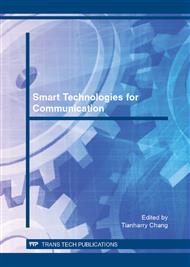p.27
p.32
p.38
p.43
p.51
p.56
p.61
p.68
p.74
The Feasibility Analysis of Using a New Network Architecture to Solve the Tidal Effects
Abstract:
To solve high cost, high energy and many other issues in the communication, propose a new network architecture, one of the important applications is to solve the "tidal effect", by BBUs uniform placement to achieve unified deployment of resources to get the purpose of saving computation. But its feasibility has not been verified, this paper will verify its feasibility by data from two aspects of changing the number of base stations and changing the different situations of the base stations. Be measured through simulation and analysis results show that the use of new network architecture can not only save computation, but also enhance the resource utilization and reduce construction, operation and maintenance costs.
Info:
Periodical:
Pages:
51-55
Citation:
Online since:
June 2012
Authors:
Keywords:
Permissions:
Share:
Citation:


